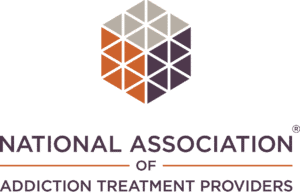Navigating Addiction in the Workplace: Strategies for Support and Sustained Employment
In today’s fast-paced work environment, the issue of addiction in the workplace is more prevalent than ever. With the pressures of deadlines, competition, and performance expectations, individuals may find themselves turning to substances or addictive behaviors as a coping mechanism. However, recognizing and addressing addiction in the workplace is crucial not only for the well-being of the individual but also for maintaining a productive and supportive work environment.
Understanding Addiction in the Workplace
What constitutes addiction in a professional setting?
- Addiction can manifest in various forms, including substance abuse (alcohol, drugs), behavioral addictions (gambling, internet addiction), and even workaholism.
- Signs of addiction may include decreased productivity, frequent absences, mood swings, and strained relationships with colleagues.
The impact of addiction on employment
- Addiction can significantly impair job performance, leading to errors, missed deadlines, and increased workplace accidents.
- Employers may face legal liabilities and financial losses due to absenteeism, healthcare costs, and decreased productivity.
Statistics on addiction in the workplace
- According to the Substance Abuse and Mental Health Services Administration (SAMHSA), around 10% of full-time employees have a substance abuse disorder.
- The National Safety Council reports that substance abuse costs employers $81 billion annually in lost productivity.
Seeking Help: Resources and Support Systems
Recognizing the signs and reaching out
- Encourage open communication and create a supportive environment where employees feel comfortable discussing their struggles without fear of judgment.
- Provide training for managers and HR personnel on recognizing the signs of addiction and offering appropriate support.
Employee assistance programs (EAPs)
- Many companies offer EAPs, which provide confidential counseling and support services for employees dealing with addiction issues.
- Promote awareness of EAPs and encourage employees to utilize these resources for assistance and guidance.
Community support groups
- Encourage employees to participate in support groups such as Alcoholics Anonymous (AA) or Narcotics Anonymous (NA) for additional peer support and accountability.
- Hosting on-site meetings or providing information about local support groups can facilitate access to these resources.
Maintaining Employment While in Recovery
Establishing a supportive work environment
- Work with employees in recovery to create a personalized plan for managing triggers and maintaining sobriety in the workplace.
- Offer flexibility in work schedules or job responsibilities to accommodate recovery efforts and reduce stressors.
Implementing workplace wellness programs
- Promote overall well-being through initiatives such as mindfulness meditation sessions, stress management workshops, and physical fitness programs.
- Fostering a culture of wellness can help prevent relapse and improve overall employee satisfaction and productivity.
Encouraging ongoing education and professional development
- Provide opportunities for employees in recovery to enhance their skills and advance their careers through training programs, workshops, or tuition assistance.
- Investing in employees’ professional growth can boost morale and motivation, reducing the risk of relapse and promoting long-term employment stability.
Conclusion
Addiction in the workplace is a complex issue that requires proactive measures from both employers and employees. By fostering a culture of support, providing access to resources and assistance programs, and prioritizing employee well-being, organizations can help individuals overcome addiction challenges while maintaining productive and fulfilling employment. Remember, addiction is not a moral failing but a treatable medical condition, and with the right support systems in place, recovery and sustained employment are achievable goals.









